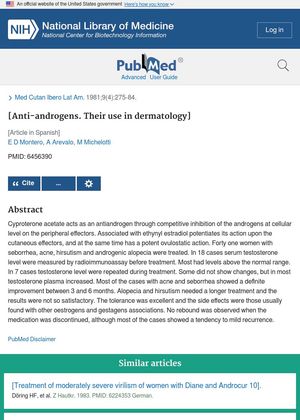Anti-Androgens: Their Use in Dermatology
January 1981
in “
PubMed
”

TLDR Cyproterone acetate with ethynyl estradiol significantly improved acne and seborrhea in women, but was less effective for hair loss and excessive hair growth.
In 1981, a study was conducted on 41 women suffering from seborrhea, acne, hirsutism, and androgenic alopecia using Cyproterone acetate, an anti-androgen that works by competitively inhibiting androgens at the cellular level. This drug was used in conjunction with ethynyl estradiol, which enhanced its effects on the skin and also acted as a potent ovulostatic agent. The study found that most patients with acne and seborrhea showed significant improvement between 3 and 6 months of treatment. However, alopecia and hirsutism required longer treatment and the results were less satisfactory. The treatment was well-tolerated with side effects typical of other estrogen and gestagen combinations. No rebound was observed when the medication was discontinued, although most cases showed a tendency towards mild recurrence.

